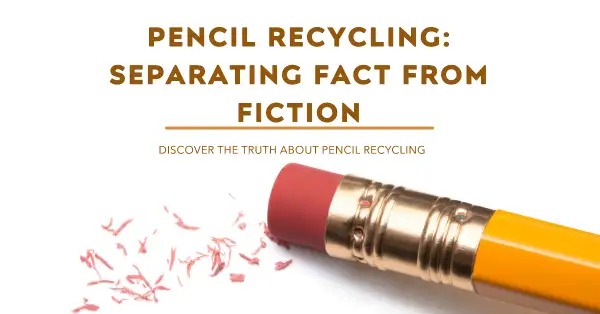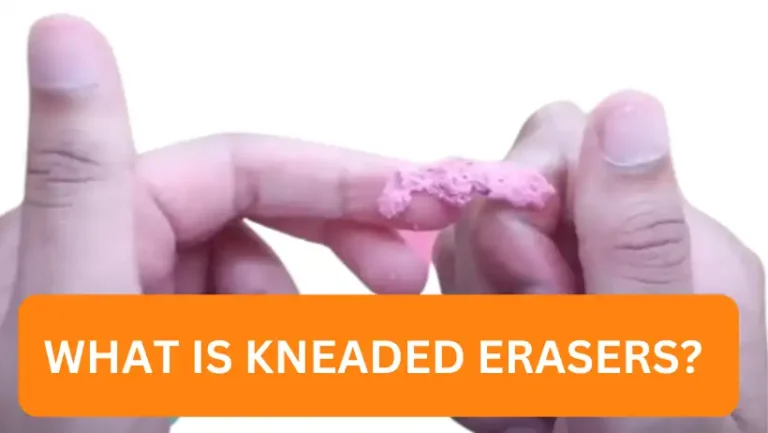Breaking It Down: Are Pencils Really Recyclable?
Pencils are composed of various materials, including wood, graphite, and lead. While wood and graphite are recyclable, lead is not. Nonetheless, there are several methods to recycle pencils without involving the lead.

Are Pencils Really Recyclable?
Support us by using our links. We may earn a commission, but it won’t cost you extra. Win-win shopping
Recycling at Local Centers
One way to recycle pencils is by taking them to a nearby recycling center. Most recycling centers accept wooden and graphite pencils. These pencils are sorted, with the wood and graphite separated.
The wood can be repurposed to create new pencils or other products, while the graphite can be used for making batteries.
Composting Pencils
Another eco-friendly option is composting pencils made of wood and graphite. These pencils can break down like other wooden materials over time, enriching the soil with nutrients.
Creative Recycling
Pencils can also be repurposed into art projects, such as sculptures and jewelry. This creative approach not only reuses old pencils but also transforms them into something new.
Recycling pencils contributes to waste reduction and environmental protection, diverting them from landfills and supporting the creation of new products.
What Are Pencils Made Of?
Pencils consist of various components, including wood, graphite, and lead. Wood forms the pencil’s barrel, while graphite makes up the lead. The lead typically combines graphite and clay, enabling the pencil to write.
Recent efforts focus on making pencils more environmentally friendly, with some utilizing recycled or biodegradable materials.
Are Pencils Recyclable?
Pencils usually consist of wood, graphite, and lead. Wood is a natural material suitable for composting or recycling, while graphite and lead are recyclable metals.
However, the recyclability of pencils varies. Some pencils may contain non-recyclable materials like plastic.
To identify recyclable pencils, check for a recycling symbol on the packaging, usually marked with numbers 3 or 4. If such a symbol is absent, the pencil may not be recyclable. When in doubt, contact your local recycling center for guidance on proper disposal.
How to Recycle Pencils
Recycling methods depend on the pencil type and materials:
- Wooden Pencils: Remove the eraser and lead for separate disposal. The eraser goes in the trash, while the lead can be recycled with other metals. Wooden parts can be recycled with other wood products.
- Plastic Pencils: Similar to wooden pencils, remove the eraser and lead. Dispose of the eraser in the trash and recycle the lead with other metals. Plastic components can be recycled with other plastics.
- Mechanical Pencils: Disassemble the entire pencil. Recycle metal parts with other metals and plastic parts with other plastics. Some recycling centers accept mechanical pencils as a whole.
Where to Recycle Pencils
Various locations offer pencil recycling options, including local schools, libraries, community centers, grocery stores, and office supply stores. If no recycling bin is available, consider mailing pencils to a recycling company.
Recycling pencils reduces landfill waste and conserves natural resources, like wood and graphite.
Benefits of Recycling Pencils
Recycling pencils yields numerous advantages:
- Conservation of natural resources, such as wood and graphite.
- Reduction of landfill waste.
- Environmental protection by minimizing pollution.
- Job creation and economic stimulation.
Recycling pencils empowers individuals to make a positive impact on the environment, the economy, and waste reduction.
Challenges of Recycling Pencils
Recycling pencils presents challenges:
- The small size of pencils makes collection and sorting difficult.
- Improper handling of lead can pose risks to workers.
- Separating plastic and wood components for recycling can be complex.
Despite these challenges, programs like the National Pencil Recycling Program (NPRP) in the United States are working to streamline pencil recycling and promote awareness about its significance.
Conclusion
In conclusion, pencils are recyclable, although challenges exist due to their varied materials and small size. Nevertheless, recycling pencils helps protect the environment and reduce waste.
For those interested in recycling old pencils, numerous resources are available. Visit environmental organizations’ websites like the Environmental Protection Agency (EPA) and the National Recycling Coalition for recycling information.
Alternatively, contact your local government or recycling center to explore local recycling programs.
By recycling old pencils, individuals can contribute to environmental protection and positive change.

